Day 1 Madrid Arrival
Day 2 Madrid w/ Toledo Option (134 km)
Day 3 Madrid - Segovia - Avila - Salamanca (235 km)
Day 4 Salamanca - Santiago de Compostela (427 km)
Day 5 Santiago de Compostela - Viana Do Castelo - Porto (293 km)
Day 6 Porto City Tour
Day 7 Porto - Aveiro - Fatima - Lisbon (302 km)
Day 8 Lisbon City Tour
Day 9 Lisbon - Merida - Seville (476 km)
Day 10 Seville City Tour
Day 11 Seville - Cordoba - Granada (250 km)
Day 12 Granada - Valencia (497 km)
Day 13 Valencia - Barcelona (301 km)
Day 14 Barcelona
Day 15 Barcelona - Zaragoza - Madrid (527 km)
Day 16 Madrid (Last Day)
Day 1:
Madrid Arrival
Arrival and transfer to the hotel. Free time to have our first contact with the city, stroll through its avenues and promenades. In the late afternoon, we will take a tour of illuminated Madrid (during the spring and summer, due to late sunset, visits will still be made in daylight) and the surroundings of Plaza Mayor. Return to the hotel. Optionally, we can taste the delicious tapas in one of the numerous taverns.
-
Madrid, SPAIN
Madrid is both the capital of Spain and its largest city. A modern city with a historic architecture where you can visit the Royal Palace, Prado Museum, Bernabeu Stadium, Fountain of Cibeles and more.
Plaza Mayor
The Plaza Mayor is a major public space in the heart of Madrid, the capital of Spain. It was once the centre of Old Madrid. It was first built (1580–1619) during the Habsburg period of Philip III's reign. Only a few Spanish blocks away is another famous plaza, the Puerta del Sol. The Plaza Mayor is for the people of Madrid and tourists to shop, walk around, eat, and enjoy the outdoors.
Day 2:
Madrid w/ Toledo Option (134 km)
In the morning, we will enjoy a delicious buffet breakfast before embarking on an escorted sightseeing tour, allowing us to see some of the city's most notable attractions, like the Puerta del Sol, the magnificent Fountains of Neptune and Cibeles, stately Alcala Gate, bustling Gran Via, the Plaza de Espana, and the Plaza de Oriente. We will spend the afternoon exploring some of Madrid's famous art museums. In the afternoon, we can embark on an optional tour to the former Imperial capital city of Toledo, where we will be escorted through its narrow cobblestone streets, soaking up the medieval atmosphere while we visit St. Tome Church, where one of El Greco's masterpieces hangs, and the city's beautiful Gothic cathedral.
-
Madrid, SPAIN
Madrid is both the capital of Spain and its largest city. A modern city with a historic architecture where you can visit the Royal Palace, Prado Museum, Bernabeu Stadium, Fountain of Cibeles and more.
Fountain of Cibeles
The centerpiece of the plaza that bears the same name, the Fountain of Cibeles features a statue of an ancient Phrygian goddess sitting atop a lion-drawn chariot, who has been adopted as a symbol of the city of Madrid.
Gran Via
The Gran Via, oftentimes referred to as "The Spanish Broadway," is a central avenue in Madrid with some of the finest shops in the city, not to mention one of the most active nightlife scenes of any European city.
Puerta de Alcala
This monument is designed in the neo-Classical style, and stands near Madrid's city center, reminiscent of the old medieval gates to the city, although this gate stands alone.
Puerta del Sol
The Puerta del Sol is the central point of Spain's radial network of streets, with a plaque marking it as "Kilometer Zero", and one of the busiest parts of the city.
-
Toledo, SPAIN
Toledo is known as the "Imperial City" for having been the main venue of the court of Charles I, and as the "City of the Three Cultures", having been influenced by a historical co-existence of Christians, Muslims and Jews.
Iglesia de Santo Tome
This church in Toledo was built during the period of the Spanish Reconquest over an old mosque, and visitors can still see the arabesque designs on the exterior of the church's tower, which was the mosques old minaret.
Toledo Cathedral
One of the prime examples of Spanish-Gothic architecture, Toledo's Cathedral was built as part of a highly concentrated effort to cover up all non-Christian religious buildings and symbols, as Toledo has a large historical population of Jews and Muslims.
Day 3:
Madrid - Segovia - Avila - Salamanca (235 km)
After a buffet breakfast, we will depart Madrid for the old Castile region, visiting the medieval city of Segovia, with its 2000 year old Roman Aqueduct and the impressive Alcazar castle. Our next stop will be Avila, where we will admire the perfectly preserved defensive walls, before continuing to the old university city of Salamanca, where we will take a city tour in the afternoon. In the evening, we will walk through the city's Plaza Mayor, always lively with activity. We will spend the night in Salamanca.
-
Segovia, SPAIN
Being one of the largest Roman structures in Spain, it was built in the period of "Flavio" around 50AD. With a profound culture and history in Segovia, you can visit Segovia Aqueduct, Alcazar de Segovia etc.
Alcazar of Segovia
Like the other Alcazars located throughout Spain, the one in Segovia was a renovated Arab fortress, converted to a magnificent castle after the Christian reconquest of Spain. It rests at the far-northern edge of town, atop a steep cliff.
-
Avila, SPAIN
Avila is a small town in Castile and Leon, Spain. Not much has changed since the Middle Ages, as far as the architecture is concerned, as the town's original medieval defense walls still proudly stand.
Old Town
The medieval walls that surround the Castilian town of Avila, which boasts one of the highest numbers of Romanesque and Gothic churches in the whole of Spain, still stand, impressively guarding the city.
-
Salamanca, SPAIN
Salamanca is a major city in Spain that mixes antiquated, medieval architecture with the atmosphere of a college town, with the University of Salamanca leading the way in the teaching of the Spanish language.
Plaza Mayor
Most Spanish cities have a Plaza Mayor, but few are comparable to that of Salamanca. Surrounded by baroque buildings, the centerpiece of this public square is the city hall, with arms of restaurants, cafes, and other shops lining the side.
Day 4:
Salamanca - Santiago de Compostela (427 km)
Today, we will depart for the mystical pilgrimage city of Santiago de Compostela. In the afternoon, we will enjoy a guided tour of the old city and its beautiful cathedral in the Praza do Obradoiro. In the evening, we will have the option of enjoying a delicious, traditional dinner in our hotel. Accommodation in Santiago(On some departures, overnight stay may be in Vigo).
-
Santiago de Compostela, SPAIN
Santiago de Compostela has its origin in the shrine of Saint James the Great, now the city's cathedral, as destination of the Way of St. James, a leading Catholic pilgrimage route originated in the 9th century.
Cathedral of Santiago de Compostela
This grand cathedral northwestern Spain is supposedly the burial site of the apostle St. James, built in the Romanesque style of architecture. The exterior is covered with intricate designs of apostles and Biblical scenes.
Praza do Obradoiro
This open, public square in Santiago de Compostela is a great spot to stop for a rest or merely people watch. Once there, your eyes willbe drawn to the exquisite cathedral.
Day 5:
Santiago de Compostela - Viana Do Castelo - Porto (293 km)
Buffet breakfast. Depart south along the coastal "Rias Baixas" into northern Portugal. We will visit the town of Viana do Castelo at the mouth of the Rio Limia with its historic old town and castle. We will end the day with our arrival in Porto, famous for its namesake Port wines.
-
Viana do Castelo, PORTUGAL
Viana do Castelo is a municipality in the Norte Region of Portugal. The population in 2011 was 88,725 in an area of 319.02 km2.
Day 6:
Porto City Tour
This morning, we will enjoy a guided tour of Porto, which includes a visit to a local winery. The afternoon will be free for us to enjoy at our own leisure.
-
Porto, PORTUGAL
Porto is the second-largest city in Portugal. This center of Portuguese urban life is more than one thousand years old and a registered UNESCO World Heritage Site. Porto also lends its name to port wine, which it first produced.
Day 7:
Porto - Aveiro - Fatima - Lisbon (302 km)
After breakfast, we will depart for Aveiro, the "City of Canals", regarded as the Portuguese Venice. Then we will continue on to Fatima, a Christian pilgrimage center, with free time to visit the Basilica. Afterward, we will drive to Lisbon, where we can enjoy an optional excursion to hear live Fado music while eating a delicious dinner.
-
Fatima, PORTUGAL
Fatima is a civil parish in the municipality of Ourem, in the Portuguese Santarem District.
Basilica of the Santissima Trinidade
One of the largest Christian church in the world, construction on this basilica was completed in 2007. With its thoroughly modern design, it looks completely unique from most other European churches.
Day 8:
Lisbon City Tour
In the morning, we will tour the city of Lisbon, admiring its splendid avenues and monuments, like the Tower of Belem and Jeronimos Monastery. We will have the afternoon free, and it is strongly recommended that we visit the graceful hilltop village of Sintra or the vibrant seaside resort town of Cascais.
-
Lisbon, PORTUGAL
The capital city of Portugal, Lisbon is one of Europe's most important economic centers. It is also one of the most popular tourist destinations. Historically significant locations include Belem Tower and Jeronimos Monastery, which are recognized by UNESCO.
Tower of Belem
This fortified tower off the coast of Lisbon, also known as the Tower of St. Vincent, was built to defend the city in the 16th century. It was built in the Portuguese Manueline style of architecture of the 16th century.
Jeronimos Monastery
The Jeronimos Monastery in Lisbon was once the home of the city's Hieronymite religious order, and one of the best examples of the Portuguese Manueline style of architecture. Today, the facility houses the National Archaeology Museum and the Marine Museum.
Day 9:
Lisbon - Merida - Seville (476 km)
Today, we will make our way back to Spain. After we cross the border, we will stop at the Roman ruins of Merida. In the afternoon, visit the spectacular Roman Theater and Amphitheater (Entrance included). Continue to Sevilla. In the late afternoon, we can attend a typical flamenco show and taste good Andalusian wine.
-
Merida, SPAIN
Merida is a destination that brings the old Roman Empire back to life. This World Heritage City boasts a Roman theatre which is over 2,000 years old and is still in use.
Day 10:
Seville City Tour
Today, we will tour the city of Sevilla, the "Pearl of Andalusia," seeing the Torre del Oro, tranquil Maria Luisa Park, the quaint Santa Cruz Quarter, and finally, the massive Cathedral with its Giralda tower. Next, we suggest optionally taking a boat ride on the Guadalquivir River. Free afternoon to stroll through this beautiful Andalusian city.
-
Seville, SPAIN
Seville is the capital of Andalucia and the cultural and financial centre of southern Spain. A city of just over 700,000 inhabitants (1.6 million in the metropolitan area, making it Spain's 4th largest city), Seville is Andalucia's top destination, with much to offer the traveler.
La Giralda
La Giralda was once a minaret for the Muslim population in medieval Sevilla, but was converted to a church bell tower after Christian forces had regained power in Iberia. Its design has influenced many other towers around the world.
Parque de Maria Luisa
On the riverbanks of Sevilla, Maria Luisa Park is a large public area that features lovely foliage, fountains, and walkways in the middle of this beautiful city. Within the park are many statues of famous Spanish figures.
Santa Cruz (Jewish Quarter)
The barrio of Santa Cruz in Sevilla was once the city's Jewish Quarter, and is now the most popular tourist are in the city. The narrow, winding streets and alleyways of this neighborhood remind visitors of a labyrinth.
Seville Cathedral
The third-largest church in the world (and the largest cathedral), the Seville is a massive Gothic building. Each of its facades has multiple entrances that are all exquisitely and ornately adorned. It was built over an old mosque.
Day 11:
Seville - Cordoba - Granada (250 km)
After breakfast, we will depart Sevilla for Cordoba, visiting the Mosque-Cathedral, one of the most marvelous religious buildings in the world. Then, we will continue to Granada for the night.
-
Cordoba, SPAIN
Cordoba is a city in Andalusia, Spain, and the capital of the province of Cordoba. The city is located on the banks of the Guadalquivir river, and its easy access to the mining resources of the Sierra Morena satisfies the population's needs.
The Mosque-Cathedral of Cordoba
The interior of this dual mosque-cathedral perfectly reflects the religious power-struggle of medieval Spain. The conversion of the church into a mosque lasted from 784 to 987. The complex is massive and features many small chapels.
Day 12:
Granada - Valencia (497 km)
Before we leave Granada, we will go on a guided tour of the amazing Moorish palacae and fortress complex, the Alhambra, seeing the verdant gardens of the Generalife. At midday, we will depart Granada, traveling along the east coast of Spain until we reach Valencia.
-
Granada, SPAIN
Granada is a mid-sized provincial capital in the Andalucia region of Spain. Rich in history and culture, Granada is arguably the single most worthwhile city in Spain for visitors. Spring and autumn are also both excellent times to visit.
Alhambra
The Alhambra is a massive complex consisting of multiple palaces and fortresses. It originated as a Spanish-Muslim fortress in the 9th century, but subsequent rulers, both Muslim and Christian, continually added additions and renovations.
Generalife
Built in the 14th century as the summer palace of Nasrid Emirs of Grananda, the name of this palace means "Architect's Garden" for the extensive gardens on its grounds, which are world renowned for their exquisite beauty.
Day 13:
Valencia - Barcelona (301 km)
After breakfast, we will take a panoramic tour of the city before continuing our route along the Levantine coast to Barcelona. In the evening, we have the option to dine at the Poble Espanyol, an architectural museum which features architectural replicas from all of Spain's regions.
-
Barcelona, SPAIN
This gorgeous Spanish city on the Mediterranean is one of the world's most popular tourists destinations due to its rich cultural heritage. Visitors can see medieval buildings or admire modernity at the Museum of Contemporary Art.
Poble Espanyol
The Poble Espanyol is a museum dedicated to the rich architectural history of the Iberian peninsula, the buildings replications of various styles from across Spain. The museum is filled with artisans who can be seen at work any given day.
Day 14:
Barcelona
This morning, we will enjoy an escorted tour of this beautiful city, passing through Plaza de Espana, we will climb to Montjuic, from where we will have a magnificent panoramic view of the city, the port, and the Olympic Ring. Making our way through the Eixample district and its famous avenue Paseo de Gracia, we will reach the Sagrada Familia, a masterpiece by the architect Antonio Gaudí. We will then have lunchtime and the rest of the day free to explore Barcelona.
-
Barcelona, SPAIN
This gorgeous Spanish city on the Mediterranean is one of the world's most popular tourists destinations due to its rich cultural heritage. Visitors can see medieval buildings or admire modernity at the Museum of Contemporary Art.
Montjuic Hill
Rising above the Barcelona's harbor is Montjuic Hill. Parks and gardens rest on this hill, converging with each other via winding paths carved into the hillside, along with a Greek amphitheater, various museums and the Olympic Park.
Passeig de Gracia
Regarded as one of the most expensive streets in the city, Passeig de Gracia is also one of the liveliest. Some very famous buildings are also located on the street, such as Casa Battlo, designed by Barcelona's esteemed architect, Antoni Gaudi.
Sagrada Familia
Designed by Antoni Gaudi, Barcelona's most famous architect, construction of the Sagrada Familia began in 1882 and continues to this day, a perfect synthesis of the 19th-century Gothic and 20th-century Modernist styles, a blend of religion and fantasy.
Day 15:
Barcelona - Zaragoza - Madrid (527 km)
Today, we will depart Barcelona and travel through old Aragon into the proud city of Zaragoza make a stop. Continue to Madrid for the night.
-
Zaragoza, SPAIN
The capital city of the Zaragoza province and of the autonomous community of Aragon, Spain.it hosted Expo 2008 in the summer of 2008.The city is famous for its folklore, local gastronomy, and landmarks such as the Basílica del Pilar, La Seo Cathedral and the Aljafería Palace.
Day 16:
Madrid (Last Day)
After breakfast, guests will be transferred to the Madrid airport for their return flights.




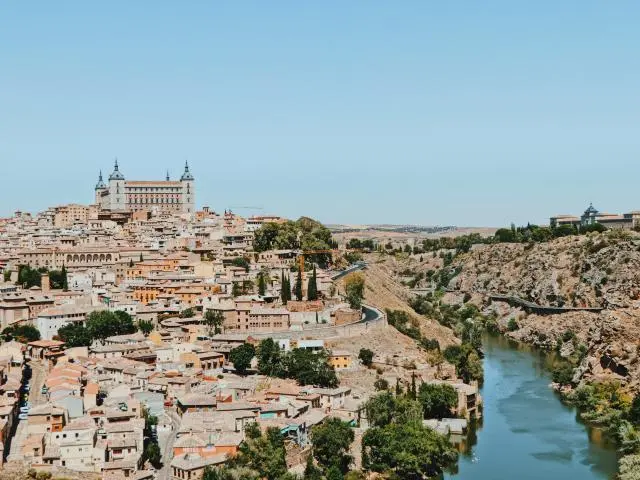
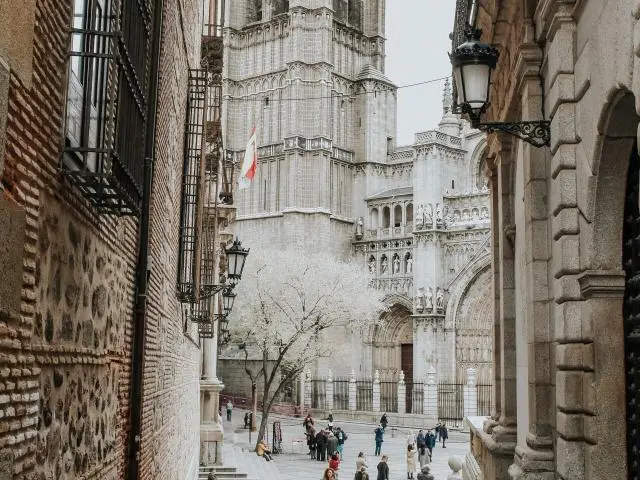
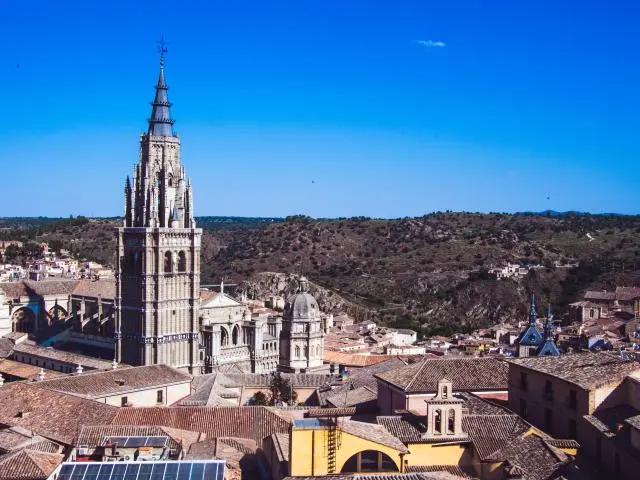

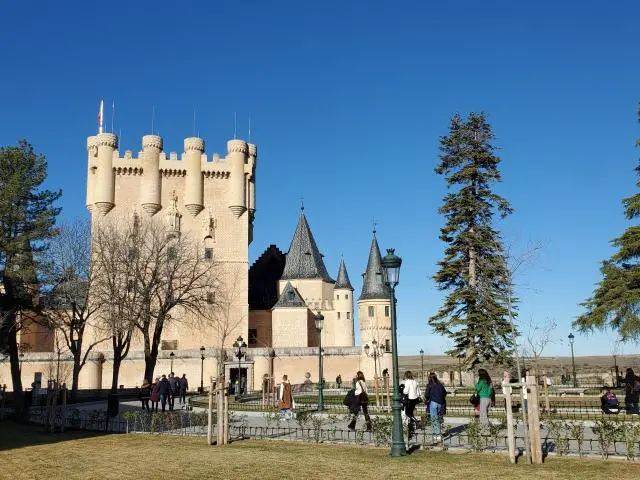
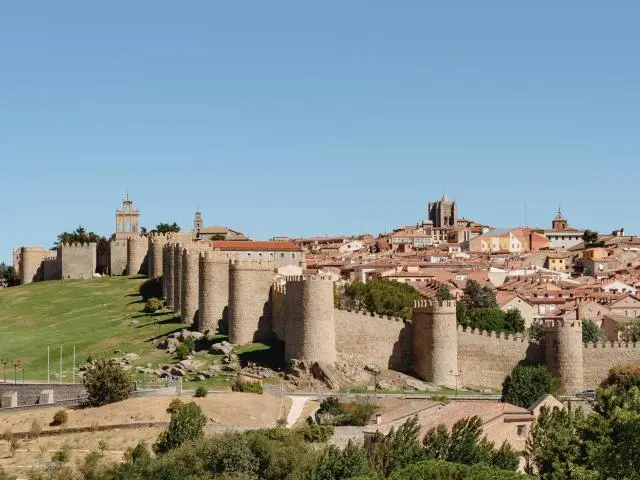
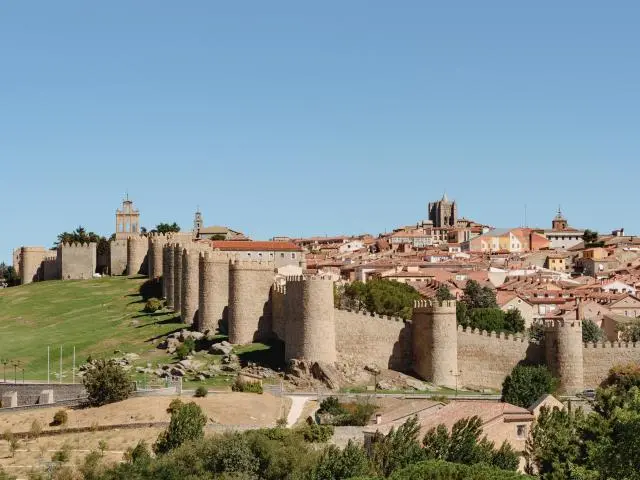
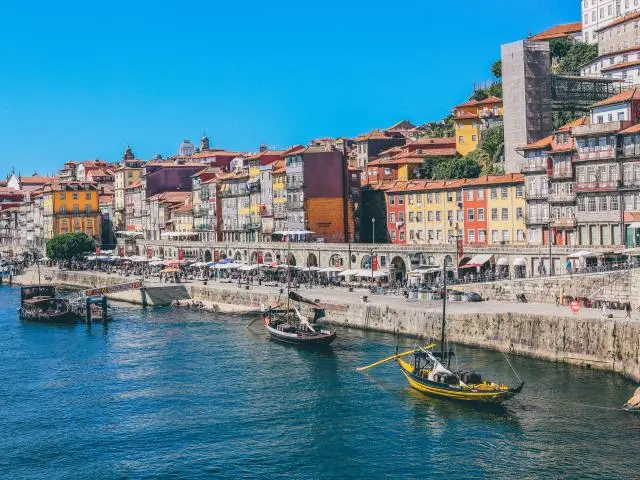
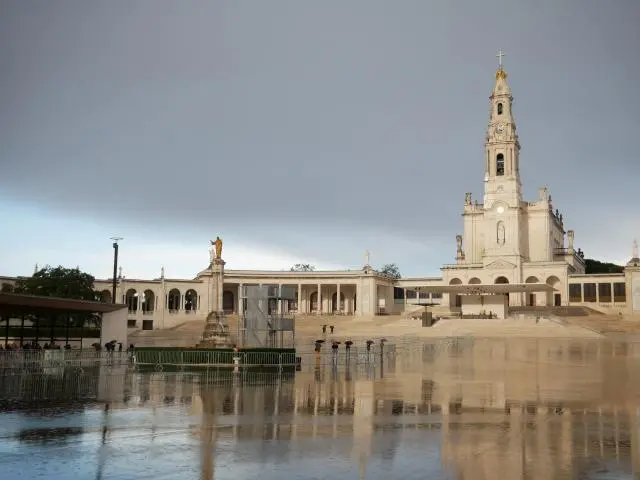




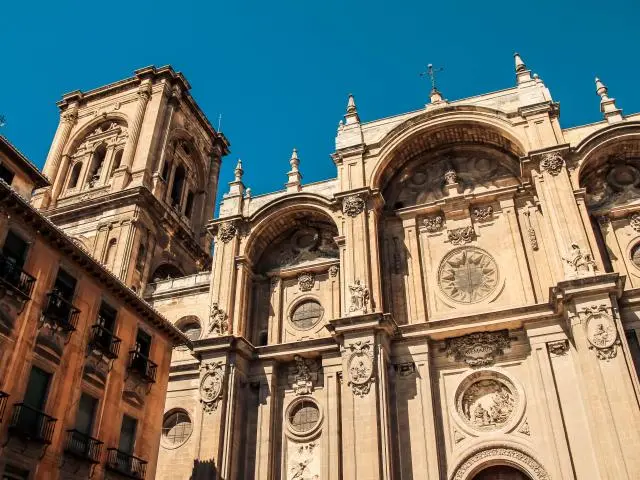

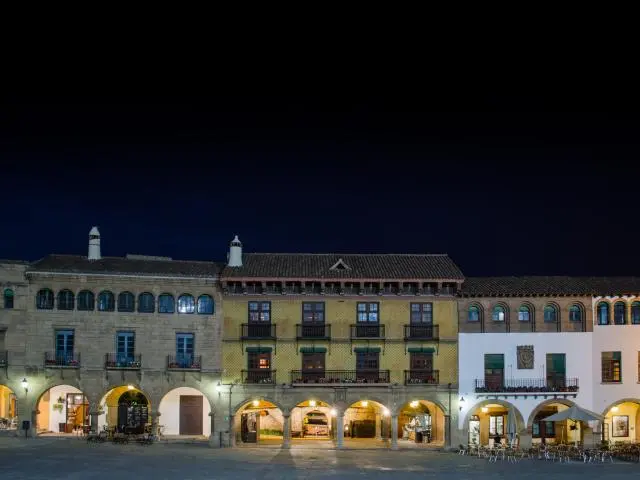


 1-Day Sintra Deluxe Tour from Lisbon
1-Day Sintra Deluxe Tour from Lisbon
 16-Day Portugal, Andalusia & Morocco Tour from Madrid...
16-Day Portugal, Andalusia & Morocco Tour from Madrid...
 2-7 Days Countries of Spain and Portugal, Europe Explorer Flex...
2-7 Days Countries of Spain and Portugal, Europe Explorer Flex...